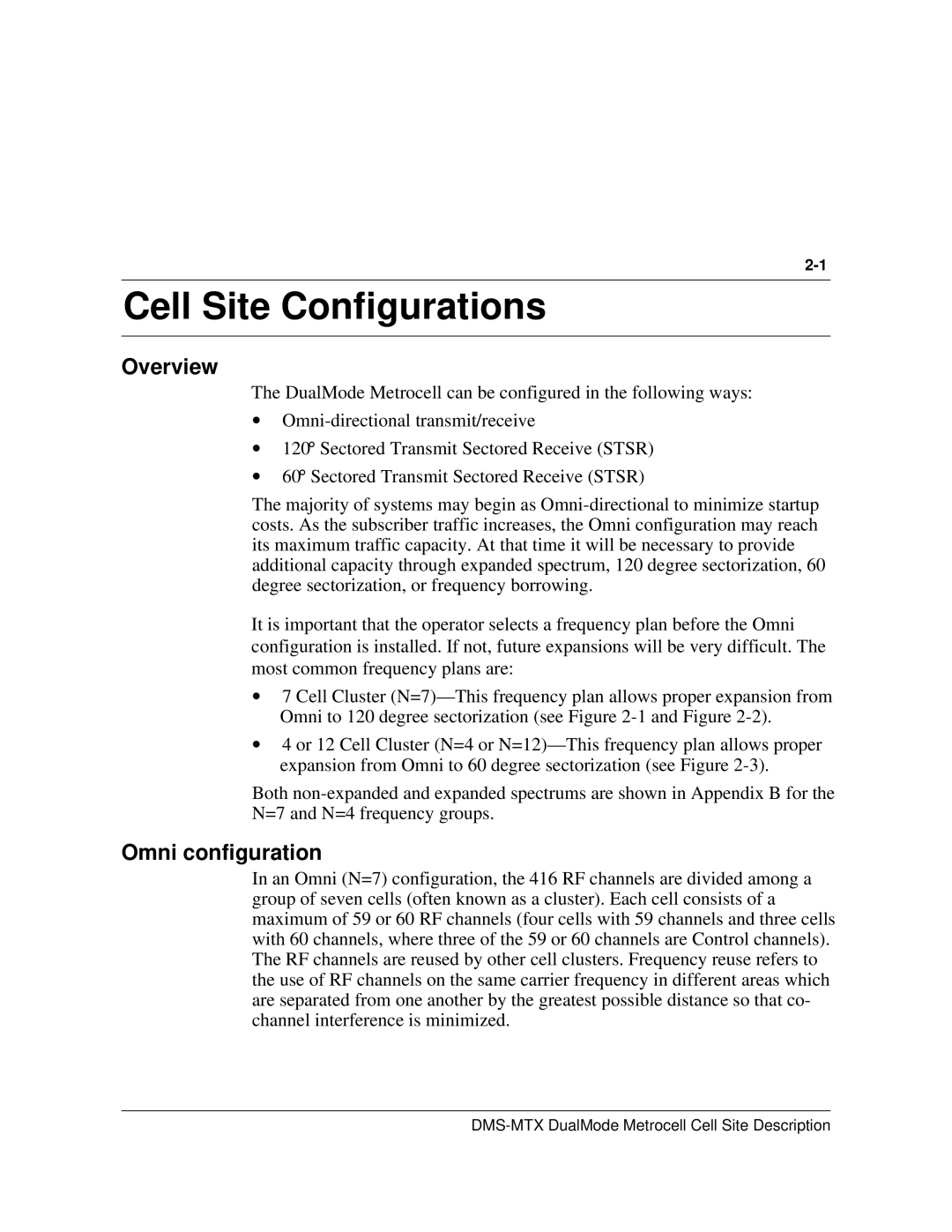
Cell Site Configurations
Overview
The DualMode Metrocell can be configured in the following ways:
•
•120° Sectored Transmit Sectored Receive (STSR)
•60° Sectored Transmit Sectored Receive (STSR)
The majority of systems may begin as
It is important that the operator selects a frequency plan before the Omni configuration is installed. If not, future expansions will be very difficult. The most common frequency plans are:
•7 Cell Cluster
•4 or 12 Cell Cluster (N=4 or
Both
Omni configuration
In an Omni (N=7) configuration, the 416 RF channels are divided among a group of seven cells (often known as a cluster). Each cell consists of a maximum of 59 or 60 RF channels (four cells with 59 channels and three cells with 60 channels, where three of the 59 or 60 channels are Control channels). The RF channels are reused by other cell clusters. Frequency reuse refers to the use of RF channels on the same carrier frequency in different areas which are separated from one another by the greatest possible distance so that co- channel interference is minimized.
